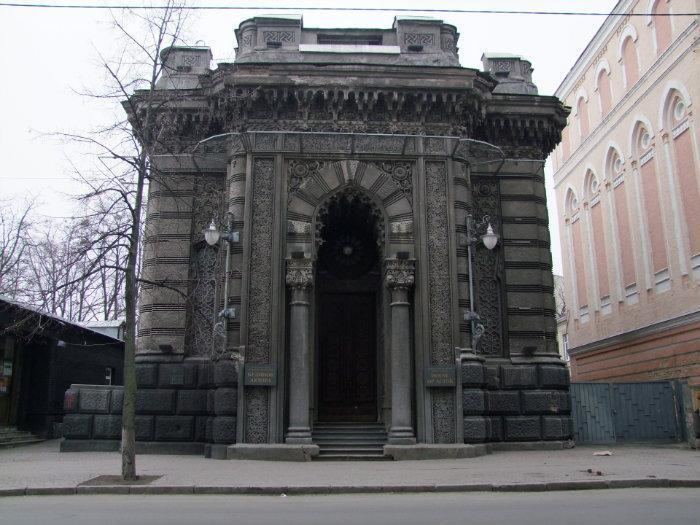Location Kiev, Ukraine Completed 1902 Architect Władysław Horodecki | Affiliation Karaite Opened 1902 | |
 | ||
Similar Villa Liebermann, Kenesa, Palace of Governor‑General in Kiev, Vasyl Stus Square, Haus Podhorskyj | ||
The Karaite Kenesa of Kiev is a former Kenesa (Karaite synagogue) in Kiev, Ukraine. It is located in Yaroslaviv Val Street 7, close to the Golden Gates of Kiev and is considered to be one of the remarkable monuments of architecture and artwork in Kiev. Nowadays it is known as the Ukrainian House of Actors.
History
Karaite synagogue, designed by Vladislav Gorodetsky, was built from 1898 to 1902 in the Moorish style. The building was decorated with magnificent dome of great beauty with stucco decorations of Italian sculptor Emilio Sala using quite expensive at the time material - cement. It was constructed on funds of “tobacco kings” of South-Western land (the name of Ukraine during tsarist times) Solomon and Moses Kogen.
Karaites first appeared on the territory of modern Ukraine in the 30s of the XIII century - almost immediately after the Mongol conquest of the Crimea. In 1795 the legislation of the Russian Empire established a distinction between the Karaites and Jews, freeing the former from the discriminatory double taxation. In 1896 the Karaite community of Kiev consisted of 292 persons. For the purchase of land for construction of Kenesa and a dwelling house (the proceeds of which would go to the benefit of Karaite community), Solomon Kogen has issued 35 000 rubles. Despite the fact that in 1897 he became paralysed, Solomon Kogen continued to manage his personal affairs and died in 1900. In his will he bequeathed the funds to complete the construction of the synagogue. The construction was continued by his brother, Moses. It was spent about 200 000 rubles in total for the whole construction. The consecration of Kenasa held on January 27, 1902 by Tauride and Odessa hakham Samuel Pampulov. The ceremony was attended by the vice-governor, mayor, chancellor and other officials.
During the Soviet times Kenesa was handed to educational institutions, that’s what saved its unique interiors. During the German occupation it has become, unexpectedly, a place for Roman Catholic services. The building was defiled during World War II by Nazis. Probably at this time it lost the dome which was part of the original structure (see picture, right). In a post-war period the Puppet Theatre functioned there and afterwards, in 1952 – cinema. In 1970s a contemporary wing was added to the building and it was converted into the Ukrainian House of Actors in 1981, remaining as such today. Unlike most of the other synagogues in Ukraine it was not given back to the Karaite community after independence. The outward design of the building is slowly ruining because of time and exhaust gases. Under the influence of gas-laden atmosphere and repeated painting its color changed to dark, though in the first few decades it had much more brighter tint. One can see that on the side wall of the building.
